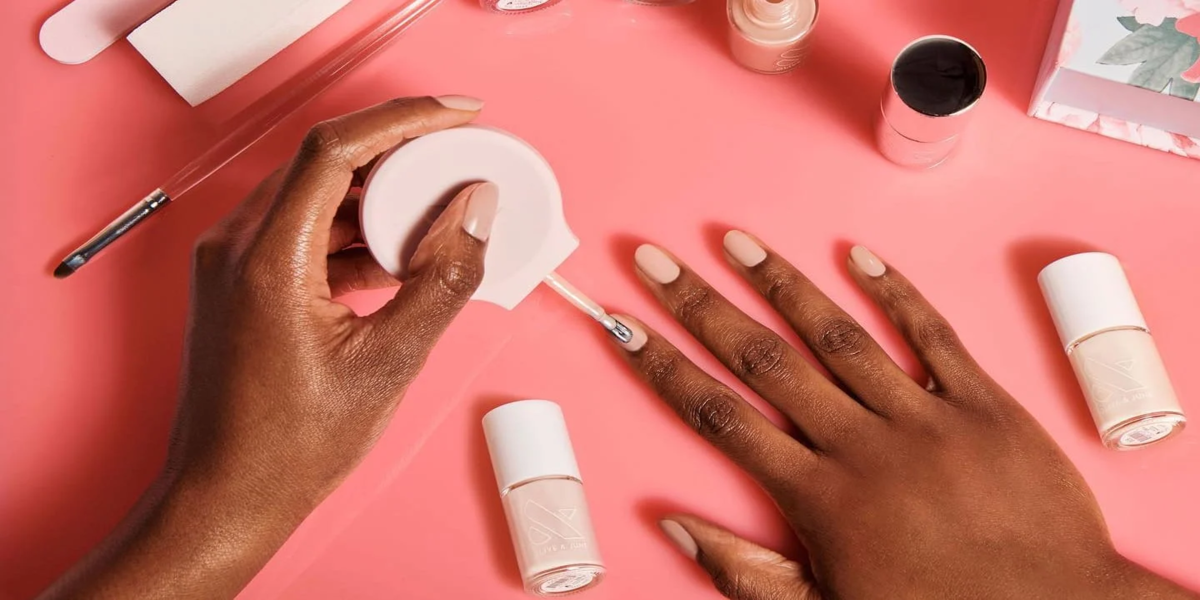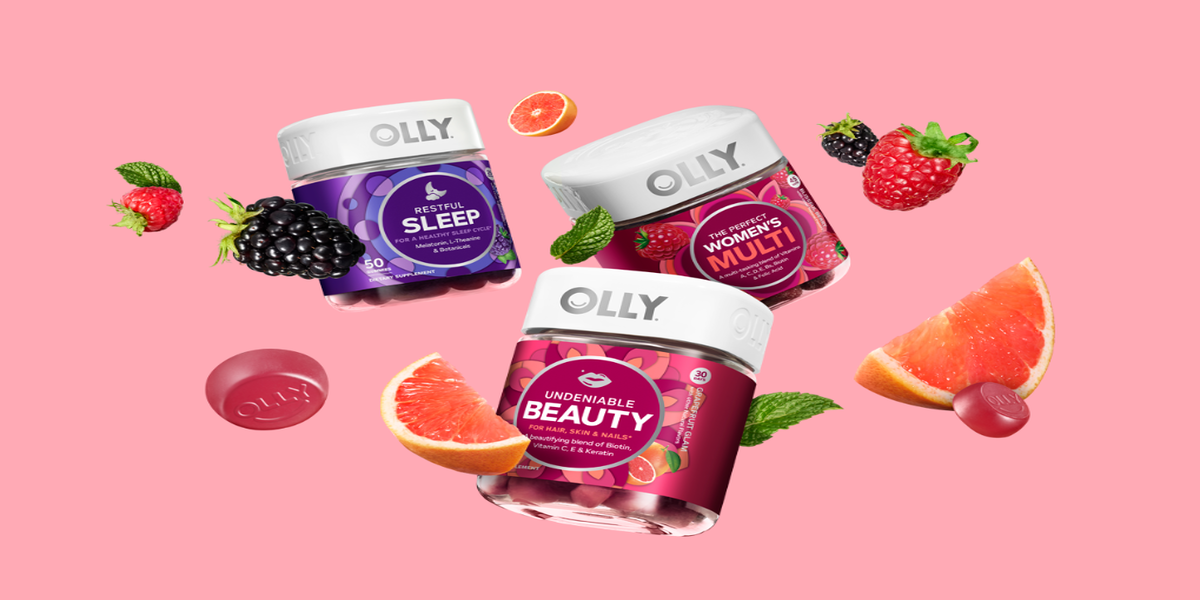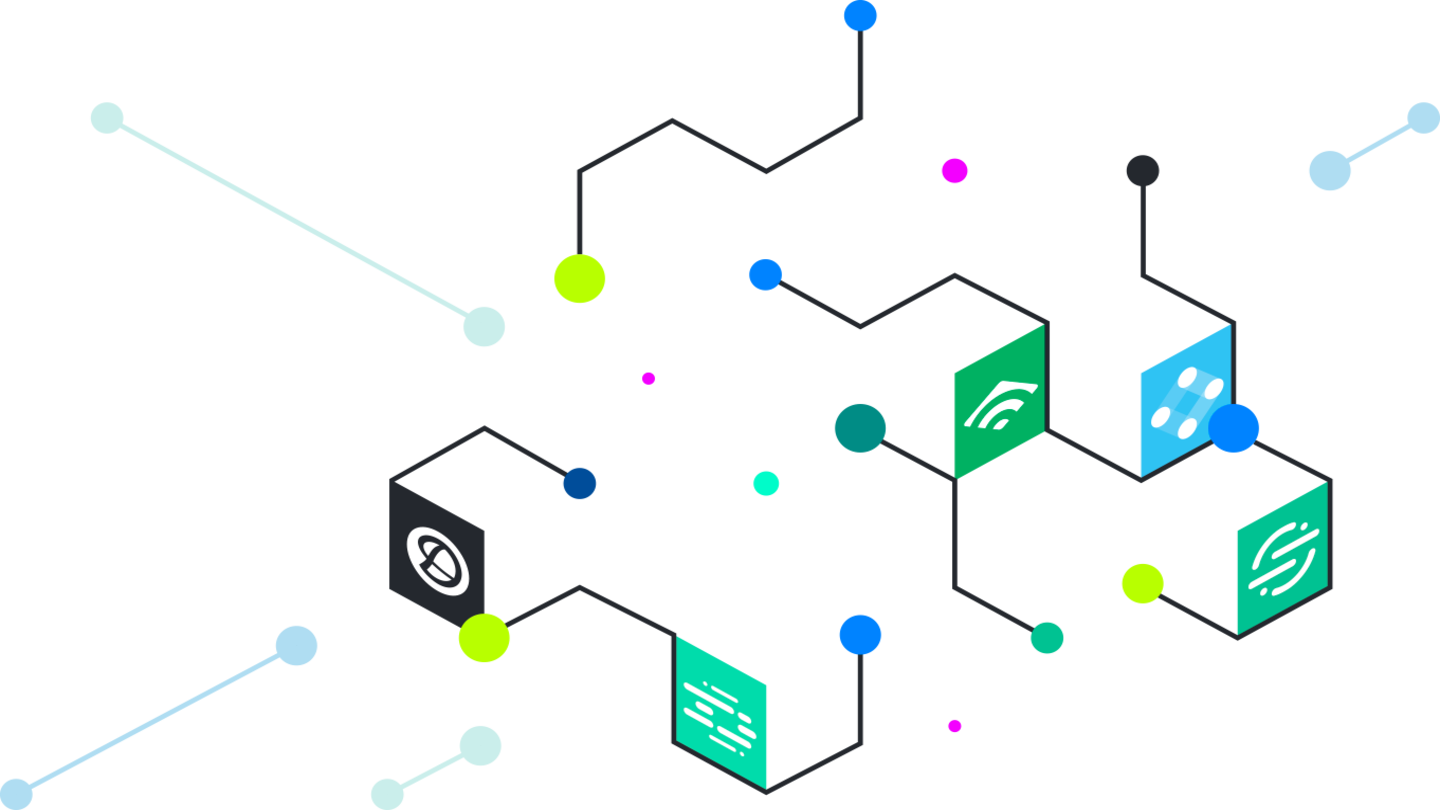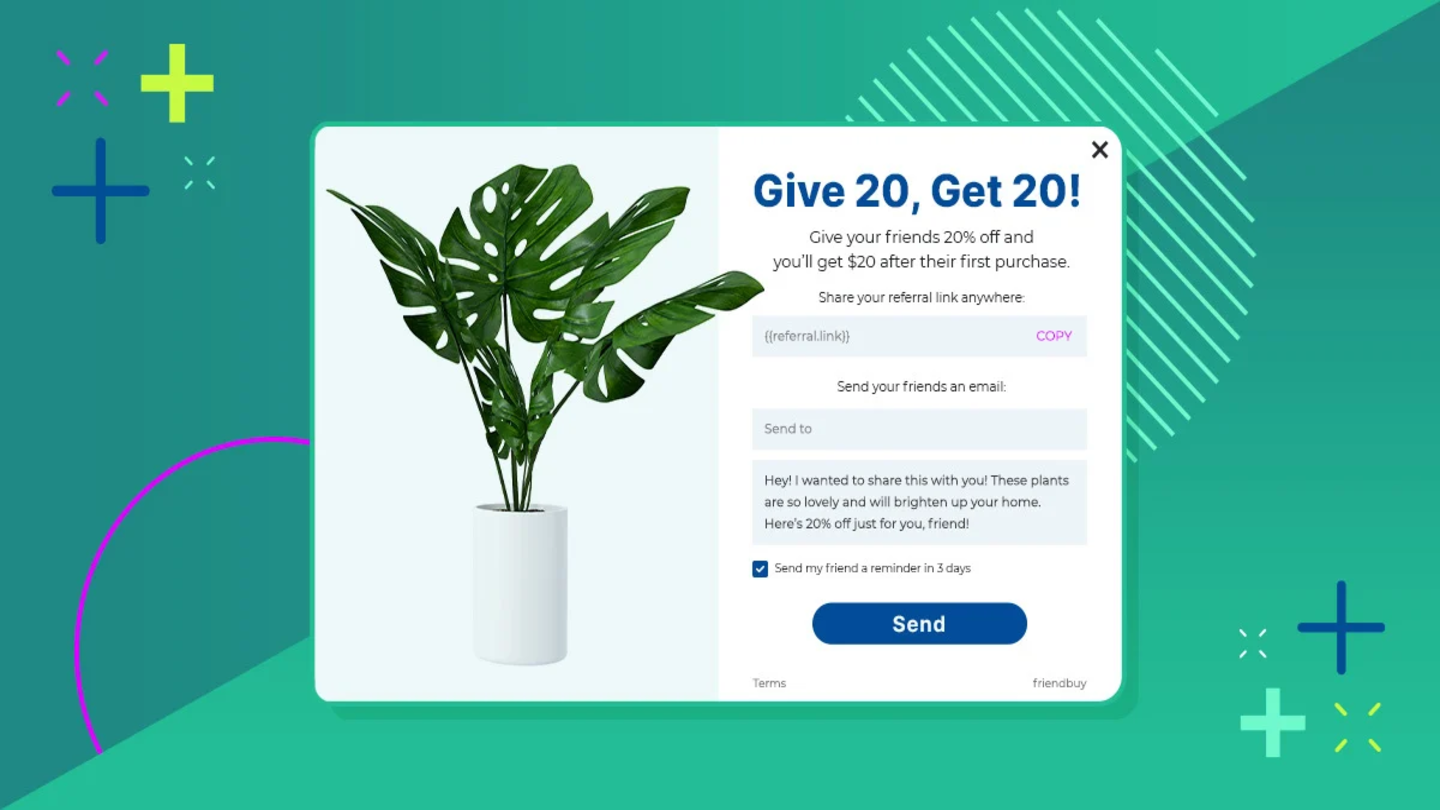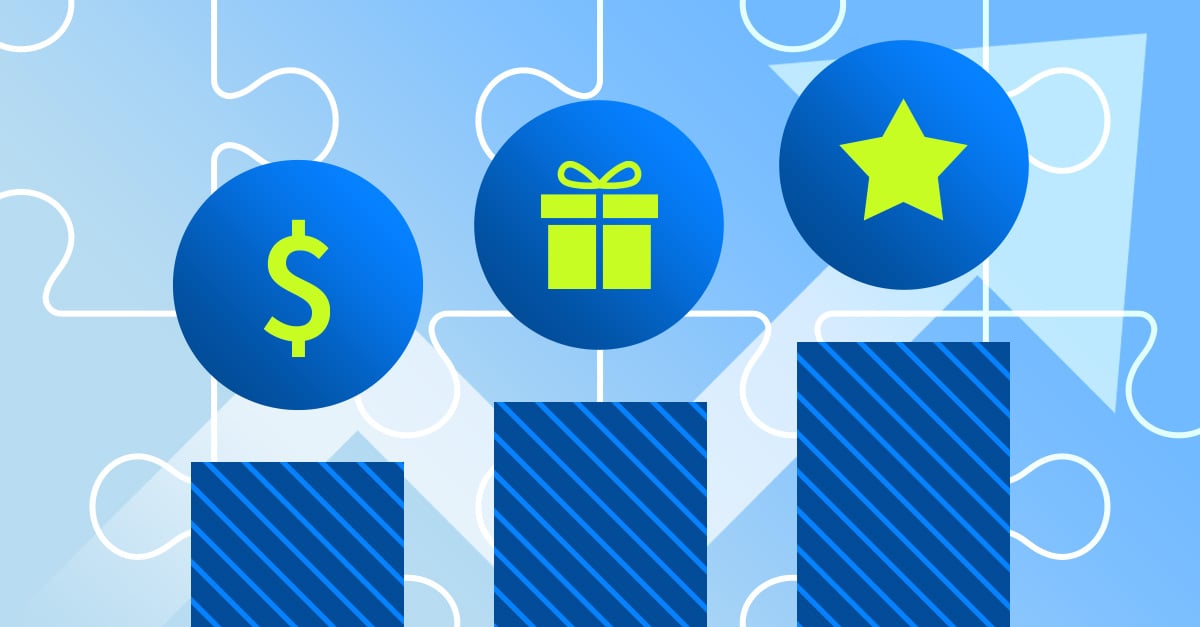Share this article
Table of Contents
A referral program really comes down to what it offers and how it is structured. In this post, we're going to go over how it is structured.
The referral incentive structure outlines how your referral rewards and incentives are distributed.
If you want to explore different types of rewards and incentives, then head over to our referral rewards guide. If you're here to learn how to set up your referral incentive structure, then you're in the right place.
Let's begin.
Referral Incentive Structure: Decide Who Gets The Referral Reward
Consumers trust recommendations from people they know compared to traditional advertising. More likely than not, existing customers who love your brand are talking about your product with their friends and family.
Source: Nielsen Global Trust in Advertising Survey, Q1 2015
And if you add a referral reward behind those otherwise organic customer referrals?
Then a juicy referral incentive may be the right push for them to join your referral program and keep on referring.
In general, referral incentives refer to a discount, gift card, or free products that customers receive for taking part in a referral program.
After the referred Friend (and new customer) converts and buys a product, they receive an incentive, while the Advocate (existing customer) receives a reward.
Friend → gets an incentive to buy
Advocate → gets a referral reward, when Friend buys
Setting up your referral incentive structure will help you bring in new customers, drive repeat purchases from your existing customer, and increase customer lifetime value (LTV).
There are numerous referral incentives and rewards that can be given to Advocates and their Friends. The two main types of referral incentives are one-sided and two-sided.
One-Sided (Rewards One Customer)
One-sided referral incentives benefit only one customer, either the Advocate or the Friend. This referral incentive structure works for companies that want to grow satisfaction among existing customers and build brand awareness.
We generally don't recommend this referral structure because most people need some kind of incentive to take action, but there are some businesses this works well for.
For example, a one-sided reward program where the Advocate gives their Friend a gift or reward can be a fun way to keep your existing customers engaged without having to make a purchase.
One of our customers, Wine Insiders, has a referral program where Friends receive a box of wine from Advocates. This is in addition to their regular “Give $100, Get $100” referral program.
One-sided incentives can be a great driver of new customers when the right referral incentives are in place... even if the Advocate doesn't receive anything at all!
Let's explore a few different ways one-sided referral incentives can play out.
Incentives For Referrals (The Advocate)
Below are examples of different referral rewards for Advocates:
-
Account credit reward. Advocates earn credit that will be applied to their accounts. Metromile gives Advocates $100 for successful referrals.
- Gift card reward. Advocates receive third-party gift cards to use at other retailers. Metromile gives Advocates a $10 Amazon gift card for qualified quotes.
- Referral contest. Advocates have the chance to earn more rewards the more they make referrals. Naturebox held a referral contest where Advocates had the chance to win products and a gift card if they were part of the top three referrers.
Incentives For The New Customer (The Referred Friend)
Below are Friend incentive rewards:
- Free box/products incentive. Companies can give away products to encourage Friends to purchase. As mentioned above, Wine Insiders has a referral program where Advocates can gift their Friends a box of wine. This is on top of their standard “Give $100, Get $100” referral program.
- Holiday-centered incentive. Referral programs can be centered around holidays and Advocates can gift their friends with products or other referral rewards. Getaway held a National Friend’s Day referral program where Friends can win a free trip when they are nominated by Advocates.
- Post purchase invite. After a purchase, an Advocate is given the chance to gift products to a Friend. For Feals’ post-purchase invite, a Friend receives a sampler gift pack of CBD oils from an Advocate.
Two-Sided (Rewards Both Customers)
The two-sided referral reward is one of the most popular referral incentive structures since both the Advocate and Friend receive something. After all, everyone likes getting free products or a discount on their order. :)
For symmetrical two-sided referral offers, the Advocate and Friend receive the same reward for example, “Give 20%, Get 20%”.
Rewards can also be asymmetrical, meaning the Advocate and Friend do not receive the same reward, like “Give 20%, Get $20.” Usually in these cases, it is better to give the Advocate a better reward so that they will take part in the referral program.
When it comes to choosing percentage-based rewards versus dollar-based rewards, we have a "Rule of 100" that we apply here:
- AOV <$100, a percentage-based discount is more attractive
- AOV >$100, a dollar-based discount is more attractive
Let's see what that looks like in real life.
Asymmetrical two-sided rewards
- Give %, Get $. Friends receive a discount, while the Advocate receives a dollar discount. Spanx used a “Give 15%, Get $20” for their referral program.
- Give %, Get a gift card. For items like beds and furniture that have a lower repeat purchase rate, it is better to give away a gift card that can be used with other retailers. Casper gave Advocates a $200 Amazon gift card for successful referrals, while Friends received a 10% discount.
Symmetrical two-sided rewards
- Give %, Get %. Both the Advocate and Friend receive a discount on their orders. The Spice House offered a “Give 10%, Get 10%” reward for their referral program.
- Give % off minimum purchase, Get % off minimum purchase. Rewards can be specific with the amount of discount and minimum purchase requirements. For Love & Lemons, a women's fashion brand, used a “Give 30% off a $250+ purchase, Get a 30% off a $250+ purchase” for their referral program.
Incentivize Your Referral Program with Advanced Rewards
Many referral programs work great using just the basic Friendbuy features, especially when you follow our best practices. However, when you take advantage of all of the powerful features available in the platform, you can take your referral program to the next level.
We do this with advanced referral rewards and incentives.
Friendbuy’s tiered reward feature allows you to build dynamic tiers for rewarding Advocates based on referred Friend purchase behavior or the number of referral conversions accrued.
By deploying these advanced features, you can generate more program engagement, encourage super-Advocates to make more high-value referrals, and build loyalty to drive even further growth. Think: gamified referral incentives.
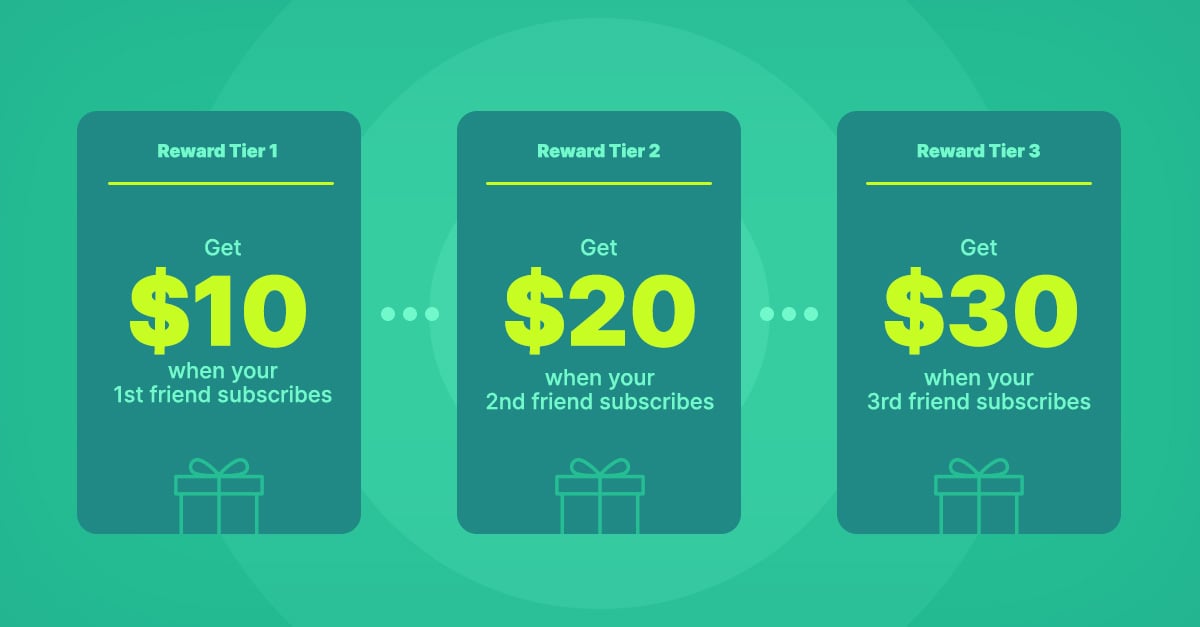
How Advanced Rewards Work
Advanced referral rewards are a great way to encourage repeat customers and keep a steady flow of incoming new customers. They work by providing fresh referral incentives to existing customers long after joining your referral marketing program.
Like all of our features, setting up advanced referral rewards in the Friendbuy platform is easy. Start by configuring the Referral & Sharing widget to select your reward model and build reward tiers based on the criteria (or triggers) you define.
Criteria can be the number of conversions (either lifetime or for a specific campaign/widget), products purchased by friends, or purchase amounts.
These are the most common triggers used in advanced referral rewards:
- SKU-Based Rewards: This approach rewards advocates based on the SKUs their friends' purchase, so it’s a great way to promote specific products or categories. You can target your referral marketing by creating a custom post-purchase overlay and using the widget-targeting feature when certain products are purchased. Pair this type of campaign with a product launch to drive awareness and boost sales.
- Rewards Based on Purchase Amount: If you want to drive up average order value, consider advanced rewards that depend on the friend’s purchase amount. This also helps you control the costs of your referral program by linking advocate reward amounts to the amount of revenue the referral generates.
- Tiered Rewards: For Advocates who are motivated by the potential to receive even more benefits for referring friends, tiered rewards are a great approach. This strategy includes increasing rewards for your advocates based on how many friends they convert or the purchase amount of the referred friend.
- Customized Emails: The Friendbuy platform allows you to customize reward email templates for each tier so you can clearly communicate the different rewards advocates earn as they reach new tiers. You can also include merge variables in the body of your reward emails to dynamically add information, such as the reward amount, which will update the content with the corresponding value within each reward tier.
Want to supercharge your advanced rewards? Then pair this with a customer loyalty program.
How Friendbuy Customers Use Advanced Rewards
One of the key benefits of working with Friendbuy is that you can learn from other brands. Our team of referral marketing experts is also available to help you develop an advanced referral rewards program and strategy that will work for your audience.
Check out how some of these Friendbuy customers have boosted their referral programs with advanced rewards.
Nuuly ramps up rewards with stackable tiers.
Subscription clothing rental brand Nuuly drives additional shares for its subscription business model, by using tiered rewards that give advocates greater incentives based on the number of friends referred. Nuuly’s compelling “Give $10, Get up to $60” CTA captures attention with the potential for a 6x reward. Advocates get $10 off one month of their subscription when the first friend subscribes, $20 off with the next friend, and an additional $30 with the third friend.
.png?width=645&height=535&name=nuuly%20tiered%20loyalty%20program%20(1).png)
Tonal drives product sales with SKU-based rewards.
Home fitness brand Tonal uses the Friendbuy advanced rewards feature with an evergreen campaign that drives friends to make a high-consideration purchase while rewarding advocates with store credit that can be used in the company’s Gear Shop. This asymmetrical double-sided offer gives friends $100 off a Tonal system and advocates $50 to spend on apparel and accessories. To support this campaign, Tonal uses tiered rewards based on specific products (SKU configuration).
.jpg?width=434&height=841&name=tonal%20referral%20program%20(1).jpg)
Interior Define uses dual tiers to increase order value.
Custom furniture brand Interior Define uses the dual rewards configuration to create tiers that determine rewards for both friends and advocates based on the purchase amount. When friends spend more than $2,000, they get a $300 discount and advocates get $150. When the purchase is less than $2,000, the friend gets a $100 discount and the advocate gets $100. This approach drives a higher order value by incentivizing friends to spend more and giving advocates a reason to encourage larger purchases.
.png?width=1199&height=604&name=interior%20define%20loyalty%20program%20(1).png)
Drinkworks drives shares with tiered rewards.
Home bar brand Drinkworks increases referral activity by rewarding advocates based on the number of customer referrals they generate. Advocates get a $30 Visa gift card for every friend they refer, and friends get a $30 discount on their purchase.
Through powerful advanced reward features with multiple configurations, Friendbuy can do all the heavy lifting for you to incorporate tiered rewards into your offer strategy. Whether you want to drive sales of a specific product or encourage customers toward higher-value purchases, advanced rewards can help you encourage the desired behaviors.
Every brand is different, which is why we work with every customer to come up with a unique approach. For more strategies and tips, read The 2021 Referral Marketing Blueprint for E-Commerce.
Improve Your Referral Incentive Structure With A/B Testing
In a perfect world, the design and copy of a referral campaign would be one and done! Fortunately for you, Friendbuy makes it super easy to A/B test to help you figure out the best incentive structure for your brand.
A/B testing allows you to test the entire referral process. Not only can you test your referral incentives and rewards, but you can also test your copy, design, and delivery.
All it takes is four steps to do A/B testing in Friendbuy:
- Designate your default variant by choosing the share button or widget you want to test.
- Create the variant by duplicating the share button or widget.
- Choose which element to change and edit it accordingly.
- Assign a weight, the default is 80 and the new variant is 20, for a period of time.
Whenever testing a campaign, it is better to change one element at a time. You can change the CTA button location, font, offers, etc. then see how the new test, or variant, performs over a period of time. Sometimes changing the copy in a way that shows that Friends will benefit from a referral, like “Invite a friend and they’ll get $20 off their first bill”, is an incentive for Advocates to join a referral program.
All of the elements of the copy and images in a campaign can be tested, including font size, color, and position.
Nice Laundry, a menswear brand, tested two designs and found that changing the “Get a free pair of socks” copy to red and italics increased sharing rates by 42%.
After a certain amount of time, if the change drives referrals up, then you know you are on the right track. You can then decide to use the variant as the image or copy moving forward.
The Disney Movie Club decided to test its campaign by increasing the number of movies that customers can buy for a dollar. They saw the purchases increase by 50% because of the change in the number of movies customers can receive.
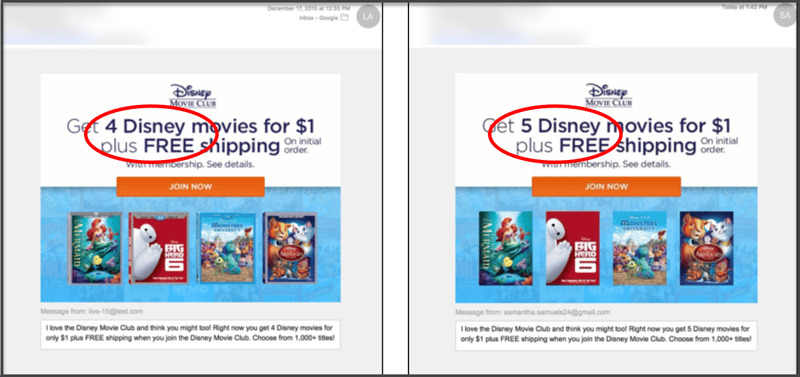
These are our pro tips for A/B testing:
- Test one element at a time.
- Work on big changes first and then refine details.
- Start at the top of the referral funnel and work your way down.
- Have reasons for testing—don’t just test random ideas; test things that you genuinely think will work better than what you’re currently doing.
For the step-by-step process, check out Friendbuys’ guide to A/B testing.
How To Choose The Right Referral Incentive Structure For Your Business
The point of a referral program is to boost customer acquisition and generate ROI. So, how do you calculate your referral program budget?
The first question to ask yourself is, what is your desired cost per acquisition (CPA)? This will fluctuate on a channel-by-channel basis.
If you have a referral program with Friendbuy, you can expect your average CPA to be between $1-$10, which is significantly cheaper than most paid channels.
The next question to ask yourself is, what is your repeat purchase rate? If you have a high repeat purchase rate, then an incentive that encourages customers to come back continuously and repurchase, such as 10% off their next order or store credit, will work well for you. If you have a lower repeat purchase rate, for example, if you sell higher ticket items that most people buy once every few years (such as a fridge or mattress), then consider a reward that doesn’t involve your customers purchasing again, such as a gift card.
The last question to ask yourself is, what offers do you typically have running on your site? Are you frequently promoting 10% off sales? If so, then offering 10% off for a referral isn’t very enticing to a customer. Try upping your percentage to 15% or 20%, as your CPA will likely remain low. Remember that advocates are only rewarded after a successful friend conversion, which is one of the great benefits of a referral program—it essentially pays for itself.
Remember, the referral program should be easy to understand so that Advocates and Friends know what the referral program is, what they have to do, and what they will get in return. There isn’t a one-size-fits-all approach to an incentive structure, but you can refer to this framework for guidance:
- Select an activity to reward. Once the Advocate shares the referral link, decide what the Friend has to do to receive their incentive. Do they have to make a purchase, sign up for a newsletter, or choose a subscription plan?
- Choose the type of reward or incentive. Think about what kind of Advocate reward or Friend incentive makes sense for your customer. It can be non-monetary like discounts, swag, free shipping, and loyalty points or it can be cash rewards like gift cards, rebates, or commissions.
- Decide how to reward. You will have to determine whether to use one-sided, two-sided, or other types of rewards for your referral program. Consider the customer lifetime value, the customer acquisition cost, and the profit margin you want to achieve.
Keep in mind what other promotions you are running. The referral program should have the most appealing reward for it to work.
|
Frequent purchases |
One-time or infrequent purchase |
|
|
Type of reward or incentive |
Coupon, discount, store credit, swag, free product, free subscription |
Third-party gift card, cash reward, donations, swag |
|
Friendbuy customers who use these types of rewards or incentives |
Spanx, Figs, Thinx, Axios, Nestle, Wine Insiders, Coursera, Tonal |
How To Measure The Performance Of Your Incentive Structure
Once the referral program launches, gauge performance by monitoring the share rate and referral conversions. The share rate will show if the Advocate incentive is working, and the referral conversion rate indicates if the Friend incentive is effective. Then you can try A/B testing to see what can be done to improve the referral program’s performance.
There are three referral program metrics to keep track of—share rate, clicks per share, and conversion rate. They are a general guideline to see if your program is working or if you need to adjust things to make the program perform better.
Generally speaking, here is the ideal range for each metric:
- Share Rate = 5% to 9%
- Clicks Per Share = 1.8 - 2.8
- Conversion Rate = 2-3x your ecommerce conversion rate
If you’re not within these ranges, then here are a few tips:
- To increase your share rate: Your Advocates aren’t motivated to refer, so try increasing your Advocate incentive.
- To increase your clicks per share rate: Your Friends aren’t motivated to click, so try increasing your Friend incentive. Also consider A/B testing the CTA copy.
- To increase your conversion rate: Try A/B testing your Friend incentives and sending Friends to a Friend landing page so that their focus is only on the offer in front of them.
When you are ready to dive into the analytics and reports of your referral program, check out Friendbuy’s guide and log into your account to see it in the campaign dashboard.
Are You Ready To Launch Your Referral Program?
Hopefully, you have a better understanding of the different opportunities for referral programs and what kinds of referral incentives and rewards can be used to motivate customers. You are on the right track just by reading this post! Now that you have an idea of what successful campaigns look like, you can adapt it to your brand and choose the best reward and incentive structure for your customers to keep them happy and encourage customer loyalty.
There are many possibilities, and Friendbuy can guide you through the process to help you figure out the best referral program for your business. If you have any questions or want to learn more about our referral program software, then contact our referral marketing team to start growing your business.

